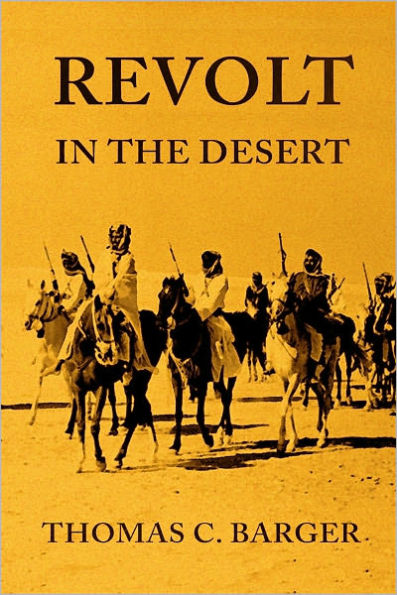Revolt in the Desert
After many years of warfare King Abdul Aziz ibn Saud had conquered most of the Arabian peninsula, in no small part due to the discipline and ferocity of the Ikhwan, Fanatical Bedouins and devout Wahhabis, they were absolutely loyal to the King, even against their own tribes.
They were Ibn Saud's shock troops during multiple campaigns against his enemies, but by 1927 when Arabia was subdued the Ikhwan didn't want to stop fighting and forgo the spoils of war. Against the King's orders they attacked into Jordan and Iraq and the revolt began.
No European ever knew more about the Bedouin than did Colonel H.R.P. Dickson. In 1948 while visiting Dickson at his home in Kuwait, Tom Barger inquired about the Battle of Sibila and the Colonel responded with a full account of the Ikhwan revolt that is the basis of this article which was originally written in 1948.
It is a story of blind ignorance, hubris, duplicity and tragedy. The outcome was all but inevitable, however the reader can't help but to speculate about the course of events had the Ikhwan prevailed.
This is an article with an excerpt, 10,000 words with 12 illustrations, approximately 45 pages in length.
1107166807
They were Ibn Saud's shock troops during multiple campaigns against his enemies, but by 1927 when Arabia was subdued the Ikhwan didn't want to stop fighting and forgo the spoils of war. Against the King's orders they attacked into Jordan and Iraq and the revolt began.
No European ever knew more about the Bedouin than did Colonel H.R.P. Dickson. In 1948 while visiting Dickson at his home in Kuwait, Tom Barger inquired about the Battle of Sibila and the Colonel responded with a full account of the Ikhwan revolt that is the basis of this article which was originally written in 1948.
It is a story of blind ignorance, hubris, duplicity and tragedy. The outcome was all but inevitable, however the reader can't help but to speculate about the course of events had the Ikhwan prevailed.
This is an article with an excerpt, 10,000 words with 12 illustrations, approximately 45 pages in length.
Revolt in the Desert
After many years of warfare King Abdul Aziz ibn Saud had conquered most of the Arabian peninsula, in no small part due to the discipline and ferocity of the Ikhwan, Fanatical Bedouins and devout Wahhabis, they were absolutely loyal to the King, even against their own tribes.
They were Ibn Saud's shock troops during multiple campaigns against his enemies, but by 1927 when Arabia was subdued the Ikhwan didn't want to stop fighting and forgo the spoils of war. Against the King's orders they attacked into Jordan and Iraq and the revolt began.
No European ever knew more about the Bedouin than did Colonel H.R.P. Dickson. In 1948 while visiting Dickson at his home in Kuwait, Tom Barger inquired about the Battle of Sibila and the Colonel responded with a full account of the Ikhwan revolt that is the basis of this article which was originally written in 1948.
It is a story of blind ignorance, hubris, duplicity and tragedy. The outcome was all but inevitable, however the reader can't help but to speculate about the course of events had the Ikhwan prevailed.
This is an article with an excerpt, 10,000 words with 12 illustrations, approximately 45 pages in length.
They were Ibn Saud's shock troops during multiple campaigns against his enemies, but by 1927 when Arabia was subdued the Ikhwan didn't want to stop fighting and forgo the spoils of war. Against the King's orders they attacked into Jordan and Iraq and the revolt began.
No European ever knew more about the Bedouin than did Colonel H.R.P. Dickson. In 1948 while visiting Dickson at his home in Kuwait, Tom Barger inquired about the Battle of Sibila and the Colonel responded with a full account of the Ikhwan revolt that is the basis of this article which was originally written in 1948.
It is a story of blind ignorance, hubris, duplicity and tragedy. The outcome was all but inevitable, however the reader can't help but to speculate about the course of events had the Ikhwan prevailed.
This is an article with an excerpt, 10,000 words with 12 illustrations, approximately 45 pages in length.
1.99
In Stock
5
1

Revolt in the Desert

Revolt in the Desert
eBook
$1.99
Related collections and offers
1.99
In Stock

Product Details
| BN ID: | 2940013567962 |
|---|---|
| Publisher: | Selwa Press |
| Publication date: | 11/10/2011 |
| Sold by: | Barnes & Noble |
| Format: | eBook |
| File size: | 394 KB |
About the Author
From the B&N Reads Blog
